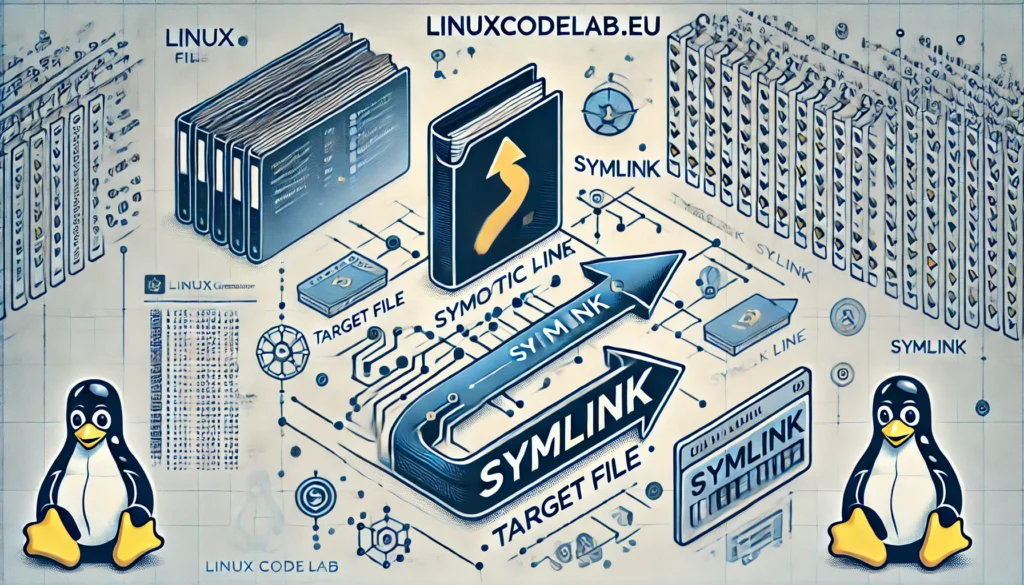What Are Symlinks in Linux? A Detailed Explanation

In Linux, symlinks (or symbolic links) are special types of files that act as pointers to other files or directories. Think of them as shortcuts or references that allow you to access another file or directory from a different location in your filesystem. Symlinks are incredibly useful for managing files and organizing directories, particularly in complex environments.
Types of Links in Linux: Hard Links vs. Symlinks
Before diving into symlinks, it’s essential to understand that Linux supports two types of links: hard links and soft links (symlinks).
Hard links are actual directory entries that point to the same inode (a unique identifier for file data) as the original file. In simpler terms, a hard link is another name for an existing file. If you delete the original file, the data remains accessible through the hard link because both share the same inode.
Symlinks, on the other hand, are distinct files that point to the location of another file or directory. They do not share the same inode as the original file. If you delete the original file, the symlink becomes broken, leading to an error if you try to access it.
Creating Symlinks in Linux
Creating a symlink in Linux is straightforward and requires the ln command. The syntax is as follows:
ln -s [target_file_or_directory] [symlink_name] lnis the command used to create links.-stells the command to create a symbolic link rather than a hard link.[target_file_or_directory]is the path to the file or directory you want to link to.[symlink_name]is the name of the symlink you’re creating.
For example, if you have a file named example.txt in the /home/user/documents directory and you want to create a symlink to it in your home directory, you would use the following command:
ln -s /home/user/documents/example.txt /home/user/example_link.txt This command creates a symlink named example_link.txt in your home directory, pointing to the example.txt file.
Advantages of Using Symlinks
Symlinks offer several advantages, especially in systems where file management and organization are crucial.
- Efficient Space Usage: Symlinks are small files that occupy minimal space, regardless of the size of the target file or directory.
- Flexibility: You can organize files and directories more flexibly without moving or duplicating the original content.
- Easy Updates: If the original file is updated, the symlink automatically reflects those changes because it points to the original location.
- Cross-Partition Linking: Unlike hard links, symlinks can link to files on different partitions or even across different filesystems.
- Simplified Access: Symlinks can simplify access to files buried deep in directory structures, providing a shortcut from a more convenient location.
Potential Drawbacks of Symlinks
Despite their many benefits, symlinks are not without potential drawbacks.
- Broken Links: If the target file or directory is moved or deleted, the symlink becomes broken, leading to errors when accessed.
- Security Risks: Improperly managed symlinks can pose security risks, as they can be exploited in certain types of attacks, such as symlink race conditions.
- Performance Overhead: While minimal, accessing a symlink adds a slight performance overhead compared to directly accessing the original file.
- Confusion in Navigation: If overused, symlinks can create confusion in directory navigation, especially for users unfamiliar with the system.
Managing and Troubleshooting Symlinks
Managing symlinks involves knowing how to identify, update, and remove them effectively.
Identifying Symlinks: To identify symlinks, you can use the ls -l command, which lists files with detailed information. Symlinks are usually denoted by an l at the beginning of the permissions field, and the output will show the target file or directory after an arrow (->).
ls -l Example output:
lrwxrwxrwx 1 user user 25 Aug 4 10:15 example_link.txt -> /home/user/documents/example.txt This output shows that example_link.txt is a symlink pointing to example.txt.
Updating Symlinks: To update a symlink to point to a new target, you can delete the old symlink and create a new one with the updated path.
rm example_link.txt ln -s /new/path/to/example.txt example_link.txt Removing Symlinks: To remove a symlink, use the rm command as you would with any regular file.
rm example_link.txt This command removes the symlink without affecting the original file.
Practical Use Cases for Symlinks
Symlinks are versatile and can be used in various practical scenarios.
Shared Libraries: Symlinks are commonly used in Linux for managing shared libraries. For instance, multiple versions of a library can exist, with symlinks pointing to the default version used by applications.
Config File Management: System administrators often use symlinks to manage configuration files across different environments. For example, a symlink can point to a configuration file specific to a testing environment, making it easy to switch between environments.
Development Environments: Developers frequently use symlinks to manage project files. A common scenario is linking development directories to a shared code repository, allowing for easy updates and collaboration.
System Maintenance: Symlinks can simplify system maintenance tasks. For example, if you need to update a directory structure or migrate data, you can use symlinks to maintain access paths without disrupting user operations.
Conclusion
Symlinks are a powerful tool in Linux for managing and organizing files and directories. They provide flexibility, efficient space usage, and simplified access to files. However, they require careful management to avoid issues like broken links or security risks.
By understanding how symlinks work and how to manage them, you can leverage their full potential to streamline your Linux environment. Whether you’re a system administrator, developer, or casual user, mastering symlinks can make your work more efficient and organized.
Thank you for reading the article! If you found the information useful, you can donate using the buttons below:
Donate ☕️ with PayPalDonate 💳 with Revolut






















